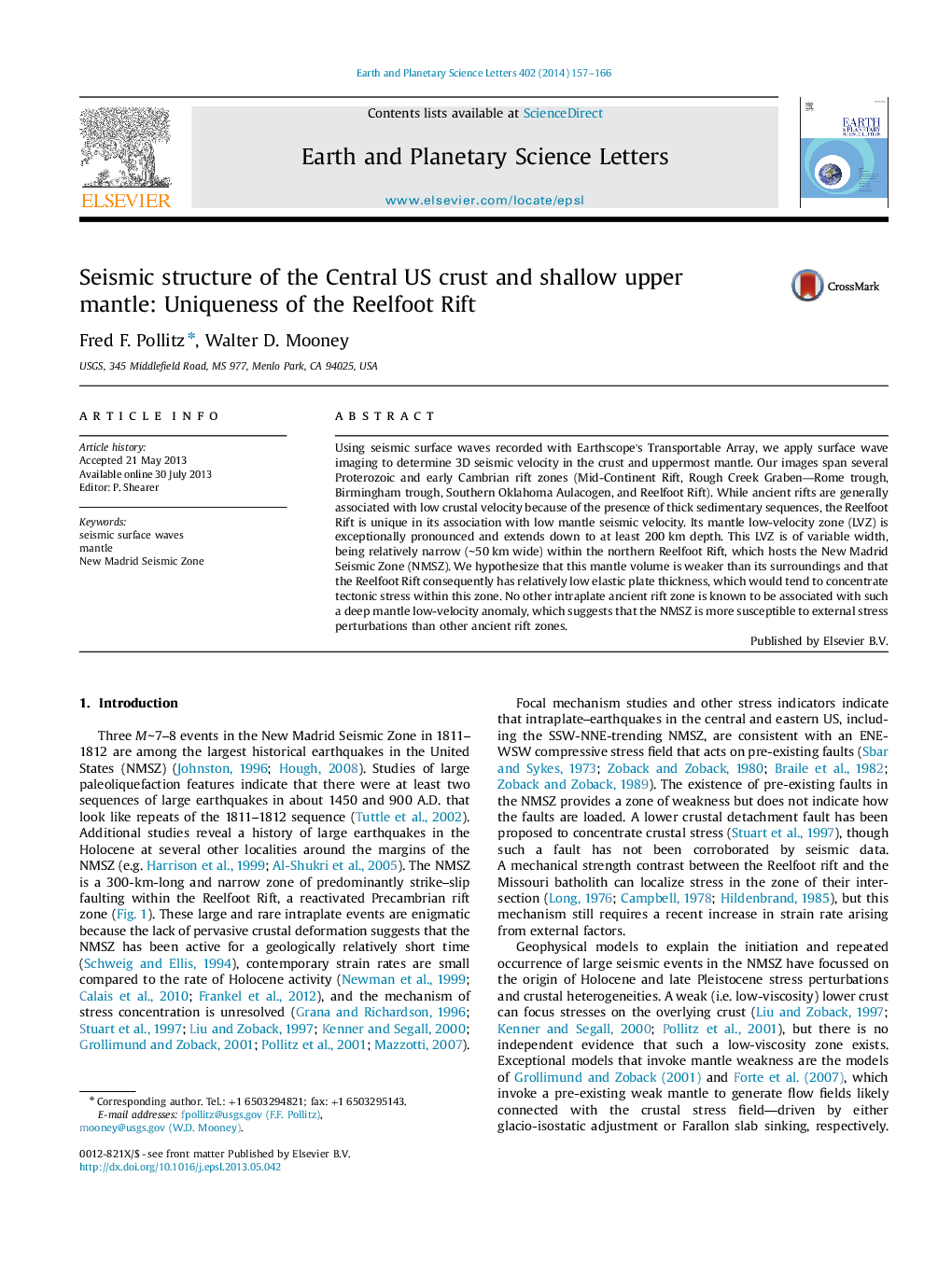| Article ID | Journal | Published Year | Pages | File Type |
|---|---|---|---|---|
| 4677005 | Earth and Planetary Science Letters | 2014 | 10 Pages |
•We model Rayleigh waves observed by the Transportable Array.•We obtain phase velocity maps and 3D structure to ∼200km depth.•Ancient rift zones are clearly identified in the seismic structure.•The New Madrid Seismic Zone overlies a deep mantle low-velocity zone.•We hypothesize that this mantle LVZ is weak and helps concentrate crustal stress.
Using seismic surface waves recorded with Earthscope's Transportable Array, we apply surface wave imaging to determine 3D seismic velocity in the crust and uppermost mantle. Our images span several Proterozoic and early Cambrian rift zones (Mid-Continent Rift, Rough Creek Graben—Rome trough, Birmingham trough, Southern Oklahoma Aulacogen, and Reelfoot Rift). While ancient rifts are generally associated with low crustal velocity because of the presence of thick sedimentary sequences, the Reelfoot Rift is unique in its association with low mantle seismic velocity. Its mantle low-velocity zone (LVZ) is exceptionally pronounced and extends down to at least 200 km depth. This LVZ is of variable width, being relatively narrow (∼50km wide) within the northern Reelfoot Rift, which hosts the New Madrid Seismic Zone (NMSZ). We hypothesize that this mantle volume is weaker than its surroundings and that the Reelfoot Rift consequently has relatively low elastic plate thickness, which would tend to concentrate tectonic stress within this zone. No other intraplate ancient rift zone is known to be associated with such a deep mantle low-velocity anomaly, which suggests that the NMSZ is more susceptible to external stress perturbations than other ancient rift zones.
